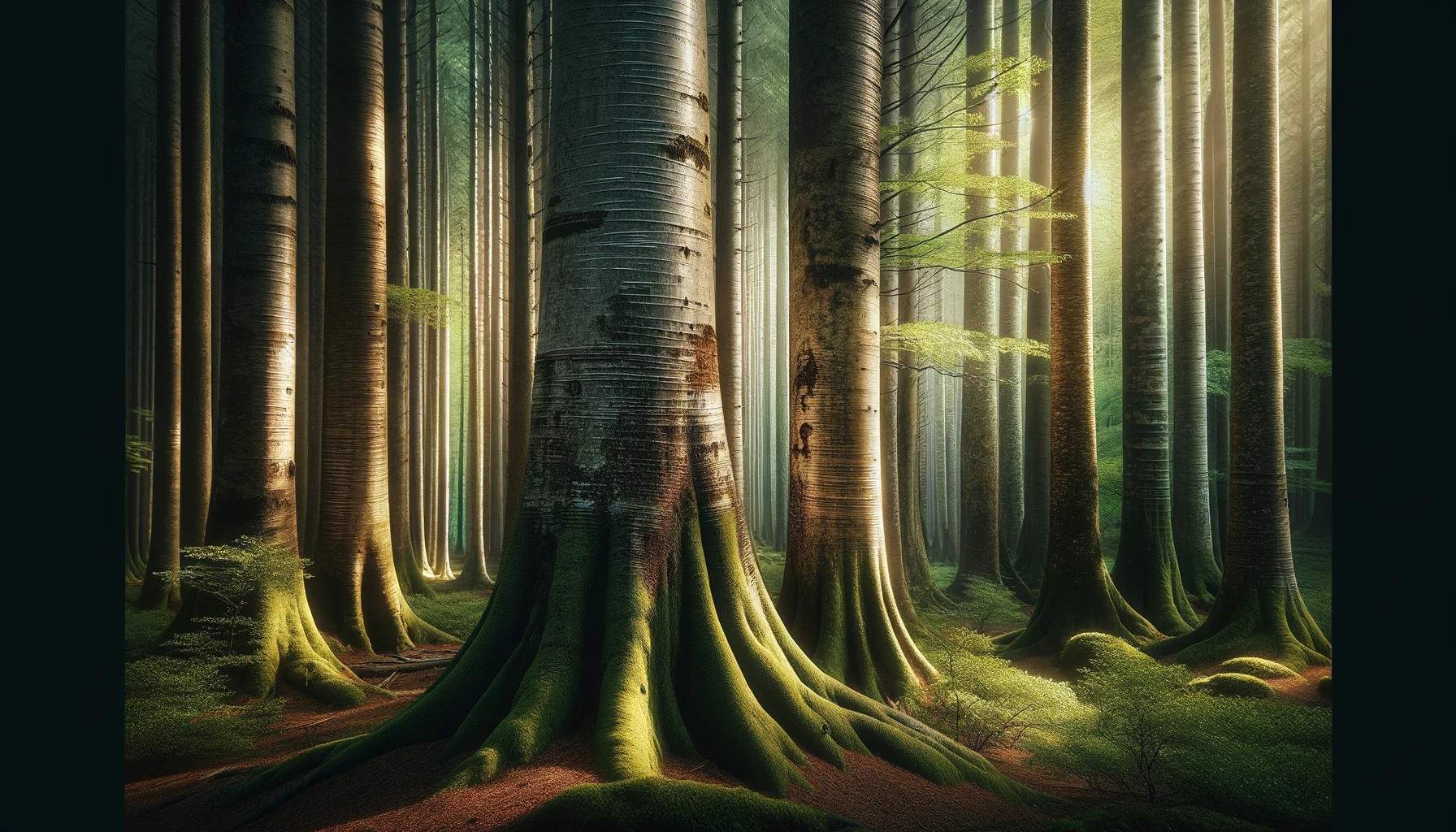First, the VC. To me the VC is the heart of the tree. The complexity, longevity and near perfect production of trillions of cells just boggles my mind. Want to find the VC? Well it’s too small for you to see, but it’s right between the outer bark and the last woody growth ring of the stem, branch or trunk. Earlier in the year when it’s working overtime and laying down a lot of new cells, by peeling the outer bark off a branch you will find a slippery wet area. This is the VC at work. When we think about it, it’s intuitive; the space between the bark and the wood underneath it is a natural seam. It just makes sense—wood to the inside, new bark to the outside.
How does the VC accomplish this? The VC is either a single layer of cells or several cell layers thick. Think of a piece of paper wrapped around the trunk, but inside beneath the bark. It is a two-sided (bifacial) tissue that, during the growing season, steadily produces new cells from both sides. The inside, the wood side, is called the xylem. A two-by-four is a piece of xylem. To the outside, the bark side, it produces the phloem, the major sugar conduction pipe of the whole tree and, farther out, the bark. In between there is the other trunk meristem, the cork cambium (CC), which is produced annually from meristemically active cells that have their origin back at the VC. These are phloem ray cells (ray parenchyma) that run out like spokes through the cambium, through the phloem, and outwards. They run across, perpendicular to the long axis of the trunk, radially.
Let’s talk about the inside, the xylem side, first. Both sides of the cambium are similar but generate different tissues. There are two kinds of mother cells or initials; one produces the cells that are vertical, that run up and down with the long axis of the trunk, and the other kind produces the cells that run horizontally, the rays. The proper name of the vertical cell initials is the fusiform initials; the other, horizontal cell initials, are called the ray initials. Living (and dead) wood is three-dimensional. It’s these two types of initials that weave the woody tissue, cell layer by cell layer uncounted—through the growth rings, through the years.
The fusiform initials of the xylem produce the vessels, the cells that will line up in long vertical rows, like spaghetti in a bundle, that are used solely to move water from the roots upward to the leaves. Water is also siphoned off from the vessels for other tissue that needs it. Xylem ray cells absorb needed water and pass it out through the VC to the phloem side rays where it replenishes water constantly needed by the phloem. All these interwoven, closely-packed cells have tiny holes in their ends and their sides that allow water movement in as many directions as needed.
To the outside (the phloem side) of the VC, slightly different cells are produced, still following the vertical and horizontal patterns. Fusiform initials of the phloem side produce the phloem cells proper, their companion cells that assist them, and phloem fibers that help support the greater phloem structure. The ray initials of the phloem side of the VC produce the phloem rays and, farther outward it’s these ray cells that are transformed into the CC. The phloem runs from inside the leaves into the branches, the trunk, and deep into the roots. Its placement just to the outside of the VC ensures its safety deep inside the outer bark. It also assures it a steady supply of needed water from the rays that supply water from the high flow volumes just to the inside of the VC in the vessel elements. Conversely, the placement of the VC right beside the phloem couldn’t be better. The VC needs a huge amunt of energy for its work, and being right beside the greatest concentration of sugar in the entire of the tree body (the phloem) is no coincidence.
There is another cell layer to the outside of the phloem tissues: the cortex, in young stems especially; it helps by supplying another layer of photosynthetically active cells. Give a young branch a light scratch with your finger nail. Doing so, you pass through the epidermis, the outer bark, the CC, and then into the thin cortex layer. You will know it when you see it by its intense green color. Outside of the cortex is the CC. This thin layer of meristematic cells produces the outer bark, the phellem; another name for the CC is the phellogen—gen as in generate. Phellem is cork, the waterproof, insect-proof, fireproof (when thick) outer layer of the tree, its bark, and it’s loaded with a wax called suberin. There is a different bark pattern for every species of tree. Know the bark, know the tree. There are as many ways to form the outer bark as there are types of trees. The bark stays in place on the outside; underneath it seismic changes occur every year in the expansion of the xylem tissue. Xylem expansion accounts for over 90% of trunk growth and size increase. What is the nice smooth skin of the young epidermis to do as the subsequent yearly rings are added underneath? Many are stretched and pulled, and pile up on each other until a deep corky layer is seen, as in pine trees. Some, due to their more elastic-like skin, stay smooth through hundreds of years, like beech trees. As the trunk expands underneath the bark, the bark tissue is pulled, stretched in two directions; it expands outwards and it also expands across. Each tree has its own specific way of doing this, and we see a great variety in bark textures as a result.


